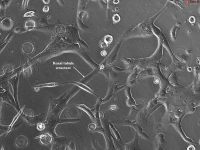Fluorescence Detection of Signs of Sterol Superlattice Formation in Lipid Membranes
互联网
互联网
相关产品推荐

3D Renal Tubule Formation Kit
$921

Recombinant-Human-Retinol-dehydrogenase-16RDH16Retinol dehydrogenase 16 EC= 1.1.-.- Alternative name(s): Microsomal NAD(+)-dependent retinol dehydrogenase 4; RoDH-4 Sterol/retinol dehydrogenase
¥11592

Dialysis Membranes/Dialysis Membranes;MD1425-5m-
¥300

γ-氨基丁酸试剂盒,用于样本中GABA含量检测,微量法,GABA Content Detection Kit
¥358

Recombinant-Arabidopsis-thaliana-Lipid-phosphate-phosphatase-2LPP2Lipid phosphate phosphatase 2; AtLPP2 EC= 3.1.3.- Alternative name(s): Phosphatidic acid phosphatase 2; AtPAP2 Prenyl diphosphate phosphatase
¥11354

